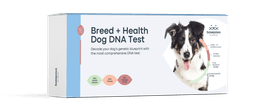Teaching your dog to roll over is a delightful way to deepen your bond and provide them with a mental workout. This trick, while appearing simple, combines obedience and play, making learning an enjoyable process for both you and your furry friend. “How to teach my dog to roll over?” you may ask. Let's explore how to do it properly.
Preparation
Getting Ready for Training
Begin by gathering your dog's favorite treats, ensuring they are small and highly motivating. Choose a quiet location with a soft surface, like a carpeted floor or a yoga mat, to make the training comfortable and distraction-free. If your dog is around 10 to 12 weeks old, they're at a perfect age to start learning more complex commands, including “dog rolling over.”
Laying the Groundwork
The roll-over trick builds on the basic "lie down" command. If your dog hasn't mastered this yet, it's an essential first step. Use treats to guide your dog into a lying position, reinforcing this behavior with rewards and praise.
The Training Process
Initiate the training by getting your dog into the down position. This step is crucial as it sets the stage for the rolling action. Next, engage your dog's interest with a treat, guiding them to understand the motion of rolling over. This moment is pivotal and deserves plenty of praise and a reward.
As your dog becomes comfortable with this partial roll, continue to use the treat to encourage them to complete the roll. This progression might require several sessions, but with consistent practice, your dog will begin to understand and anticipate the action, eventually performing it with just the command as a cue. Remember, the goal here is not just the physical action of rolling over but also fostering an environment where your dog feels encouraged and supported throughout their learning process.
Step-by-Step Guide to Roll Over
Start with the Basics
How do you teach a dog to roll over? Ensure your dog is proficient in the "lie down" command, as it's the foundation for rolling over. Use treats to guide your dog into lying down, reinforcing this action with praise and rewards.
Encourage Side Rolling
Once in the down position, hold a treat near your dog’s nose and slowly move it towards their shoulder, encouraging them to roll onto their side to follow the treat. This is a crucial step in getting them used to the rolling motion. Remember to praise and reward even the smallest attempts at rolling to keep their motivation high.
Guide the Full Roll
After your dog is comfortable rolling onto their side, you can encourage a full roll. Continue using a treat to guide their nose and head in a motion that encourages a complete roll. Some trainers suggest moving the treat over your dog's head towards the opposite shoulder, while others recommend a more direct route from nose to flank. Choose the method that works best for your dog, always using positive reinforcement to celebrate their success.
Introduce and Reinforce the Command
As your dog becomes more comfortable with the rolling motion, start introducing the verbal cue "roll over" each time you practice the motion. Consistency is key here; use the same command every time and reward your dog for successful rolls. Over time, your dog will associate the command with the action.
Fade the Lure
Once your dog reliably rolls over with the lure and command, gradually reduce the reliance on the treat. Start by using just the hand motion without a treat in your hand, then eventually phase out the hand motion too, so your dog responds to the verbal command alone. This transition requires patience and may take time, so continue to reinforce success with treats and praise .
Practice and Generalize
Practice in various environments and situations to help your dog generalize the command. Dogs may not immediately understand that "roll over" means the same thing in different contexts, so practicing in new locations and under different conditions can reinforce their training.
Troubleshooting and Patience
Some dogs may pick up this trick quickly, while others need more time and encouragement. If your dog struggles, break down the steps even further or go back to the basics if necessary. Always approach training dogs to roll over with a positive attitude and plenty of patience
Tips for Success
Patience and positive reinforcement are your best tools. Every dog learns at its own pace, so celebrate the small victories along the way. Consistency in your commands and rewards helps your dog understand what's expected, making the training process smoother for both of you. If your dog seems disinterested or struggles with the trick, take a step back and review each part of the process, ensuring they're comfortable and ready to proceed.
Conclusion
How to train your dog to roll over? Training your dog is more than teaching a new trick; it's an opportunity to enhance your communication and deepen your bond. Through patience, consistency, and positive reinforcement, you'll create a rewarding experience that benefits both you and your dog.
Frequently Asked Questions
How long does it take to teach a dog to roll over?
The time it takes to teach a dog to roll over varies; some dogs may learn in a few days, while others might take a few weeks, depending on factors like the dog's age, temperament, and previous training experience.
Can older dogs learn to roll over?
Yes, older dogs can learn to roll over, although it may take a bit longer than with younger dogs. Patience and consistency are key, and it's important to ensure the dog is physically comfortable performing the trick.
What do I do if my dog shows no interest in rolling over?
If your dog shows no interest in rolling over, try to make the training more exciting by using higher-value treats or changing the training environment to reduce distractions. Also, ensure the training sessions are short and fun to keep their interest peaked.



